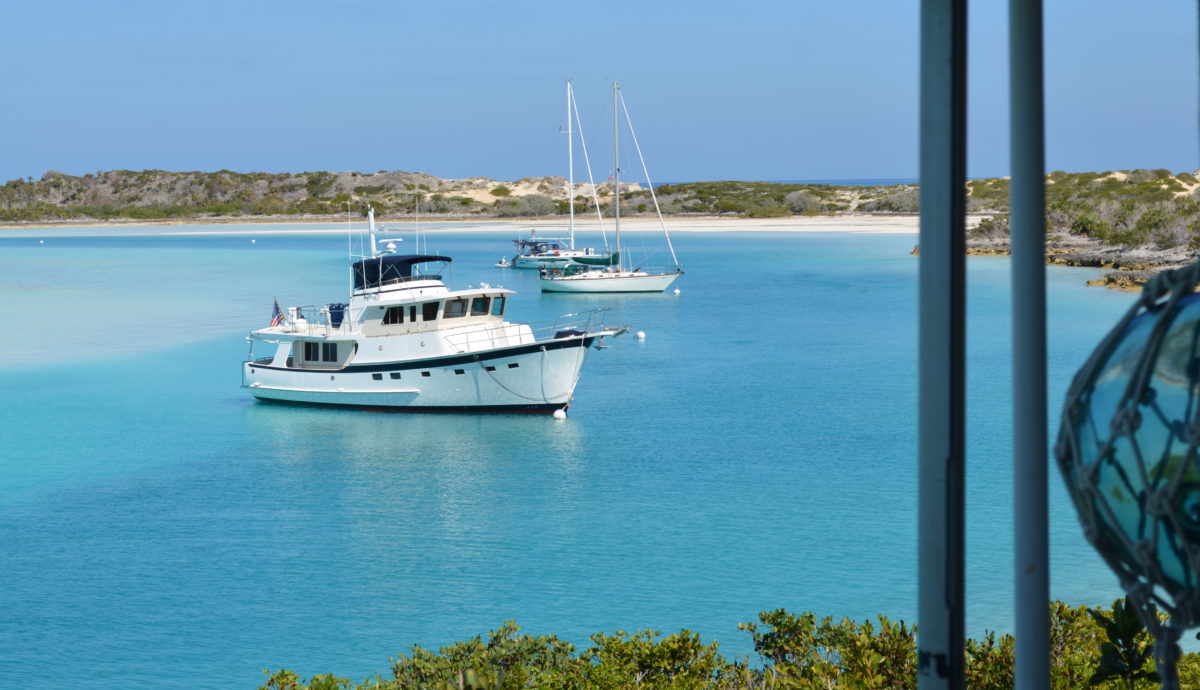A while back I posted about some of our experiences crossing the gulf stream, good and bad. That post discussed various approaches to getting across as quickly and easily as possible. For this trip we were heading to West End from Lake Worth inlet, using all of a fairly narrow weather window.
For planning purposes, I calculated 55 nm at 94 degrees (T). I estimated the current to be an average of 2.5 knots for the 40 nm of the stream. That would equate to an average speed of 6.5-7 knots and 8-9 hours. Since the route is roughly perpendicular to the stream I chose to take the rhumb line route rather than play the current.
I used NOAA gulf stream data, sourced from the Passage Weather App and weather from NOAA, Windy, and Chris Parker. The weather forecasts were generally in agreement that conditions would be decent, but within that broad comment, there was a fair amount of variability, as you will see in a minute. Since we were looking at about 12 hours of relative calm between two cold fronts, that would likely explain the range in the forecasts.
For this post, I will first present the forecasts and planning data, then the actual results. We will cover both weather and GS current forecasts. So lets start with the NOAA GS forecast, courtesy of Passage Weather, for Friday, 15 Jan 2021:

This forecast for GS current shows a mostly yellow (2-2.5 knots). From NOAA data the west boundary of the stream was 7 nm from Lake Worth Inlet. A rough estimate of the eastern boundary put the GS about 13 nm off West End for a total width of 35 nm.
The GRIB models are presented next:

The top two rows of numbers are the gradient and gust winds from the Euro model. The next two rows are the US model, them Meteo and NAM. Note that the Euro shows a spike in early afternoon. (that spike never happened) Otherwise, the winds were predicted to be light out of the west.
Weather Forecasts:
NOAA:
For Friday, as of Wednesday:
West winds around 5 knots becoming south southwest in the afternoon. Seas around 2 feet. Period 5 seconds. Intracoastal waters a light chop. Slight chance of showers in the morning, then chance of showers in the afternoon.
For Friday as of Thursday:
Northwest winds 5 to 10 knots becoming west southwest in the afternoon. Seas around 2 feet. Period 5 seconds. Intracoastal waters a light chop. Slight chance of showers.
For Friday as of Friday Morning: No change from Thursday
Chris Parker: Northern Crossing Route
For Friday as of Wednesday:
NW-N up to 15k/2-5′ Fri15
For Friday as of Thursday:
L&V<WNW-NW up to 15k/1-4′ tonight-Fri15;
The actual weather and sea conditions were pretty close to both NOAA and Chris Parker as of the day before. As you will see in the table coming up, we started off with NW winds in the 15 knot range, with some gusts to 20. The winds died off during the morning and did back to the SW just as we arrived in early afternoon. Note that these human-generated forecasts were closer to actual than the GRIBS.
Sea conditions started out a bit higher than NOAA predicted. We saw 3′-4′ for a while, before calming to 2′ then 1′. Chris got it right with his 1′-4′ forecast, but I suspect he was thinking the 4′ would have come at the end of the trip and not the beginning.
To build the table below I recorded course, heading, speed through the water and ground speed every half hour. After the trip I calculated current set and drift from that data. Despite my attempts at accuracy, I had to estimate speed through the water based on RPM settings and experience with the boat. Our paddle wheels work but are not always accurate. And the calculator I used did not carry current drift speed to the first decimal so that too is a bit rough.
Lets first show a picture of the gulf stream with our course plotted. The blue arrows represent the strength and direction of the current. Note it was strongest near the west wall and nearly on our nose near the east wall. The numbered arrows, 1 through 5, relate to points on the table, below.


At an average speed through the water of 8.2 knots and a speed over ground of 7.8 knots, we made much better time than planned. As you can see from the table, the current speed was much below predicted, and the lowest I have ever experienced. One note, with light winds from generally astern, we might have picked up a tenth or two of STW do to the reduced wind drag. That might increase the current drift respectively so I entered some of the current speeds as a range.
In the continuing discussion about the best ways to navigate the GS, in this case the straight shot approach was the best.

You must be logged in to post a comment.